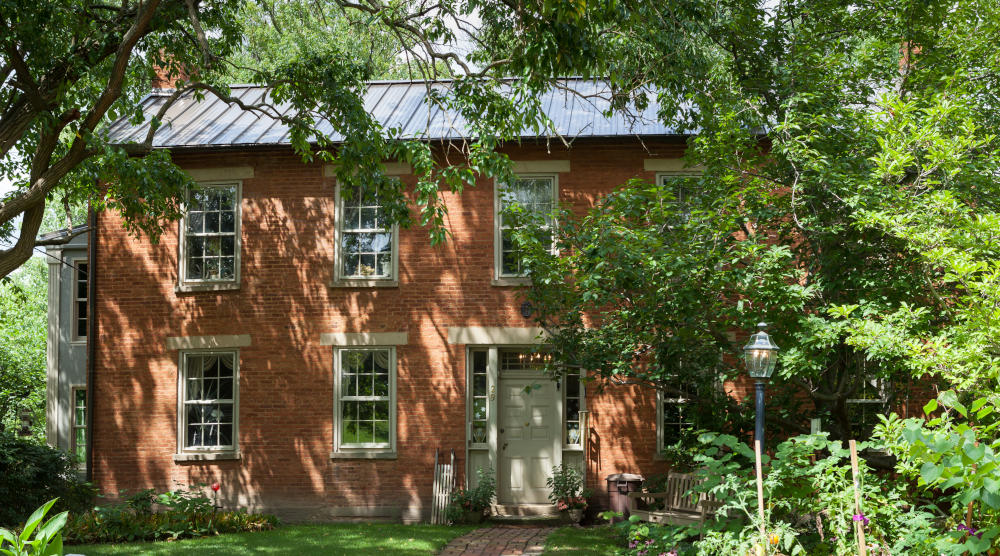Hauling Freight & Staying At Caldwell Tavern

Taverns were indispensable to the westward movement of America. Drivers worked hard through the day and needed a place to eat, wet their whistle and sleep.
Before semi tractor-trailers, railroads hauled America’s freight. Before the railroads, teamsters drove Conestoga wagons on long hauls from the east coast across the National Road, through Washington, PA to Wheeling, Virginia (before the Civil War), and onto the west.
They drove a team of six draft horses pulling the wagons about 15 miles a day. Traffic was heavy through the day and into the evening on the National Road as the wagons shared it with fast-moving stagecoaches.
The Conestoga wagon was the tractor-trailer of the 19th Century, Legends of America wrote.
At the end of the day, the drivers stopped at a tavern. Taverns could be found about every mile to service all that traffic. There were more taverns on the road than any other sorts of businesses. They offered food, drink and lodging. Most of those old taverns that lined the National Road during its heyday are gone. About thirty remain.
Soon after the National Road opened through the area, Caldwell Tavern was there for them – possibly as early as 1819. The 2½ story brick tavern faced the National Road, making it an easy stop. There was a main entry into a well-lit central hall that gave access to parlors with fireplaces, upstairs rooms and a rear door.
A second outside front door let thirsty drivers into the barroom where they might enjoy a unique drink. Taverns invented their own specialty drinks to offer something the other taverns didn’t have.
Like many taverns along the National Road, their meals were prepared in an ell kitchen out back. The kitchen had a large, walk-in fireplace with a bake oven and cupboards on either side. Steps led up to the rear staircase, providing access from the kitchen to hotel rooms. Another door lead down to the cellar.
There was a double-stacked rear porch that drivers surely appreciated during the dog days of August.
The building had a stone foundation and brick walls. An attractive roof constructed in the standing seam metal style had the low pitch common to the Greek Revival architectural style that was popular in the 1800s. Chimneys vented the interior fireplaces needed to keep Caldwell Tavern guests warm during Washington County winters.
Caldwell Tavern burned in 1840. It was rebuilt – the structure that stands there now is 180 years old. Traffic along the National Road peaked in the mid 1800s as trains replaced the Conestoga wagons. After James Caldwell died, his widow operated the establishment until 1873. The tavern showed declining revenue in its later years.
The National Road was improved as cars motored the roads in the early 20th century. The road past the tavern was realigned. U.S. 40 Route is now 55 feet behind the house.
The structure has been changed over the years. Owners of the former tavern removed the front porch and enclosed the rear porches. The door into the former barroom was replaced by a window. Changes were made to the interior as well, although the floor plan remains pretty much intact. It remains a historically significant building because of how it serviced the wagon and stagecoach drivers who traveled the National Road.
Caldwell Tavern was designated an historic landmark by the Washington County History & Landmarks Foundation and was posted to the National Register of Historic Places in 1996.
Today, it’s someone’s tree-shaded home in Buffalo Township near Claysville, not far from the S Bridge.
This article was published in








